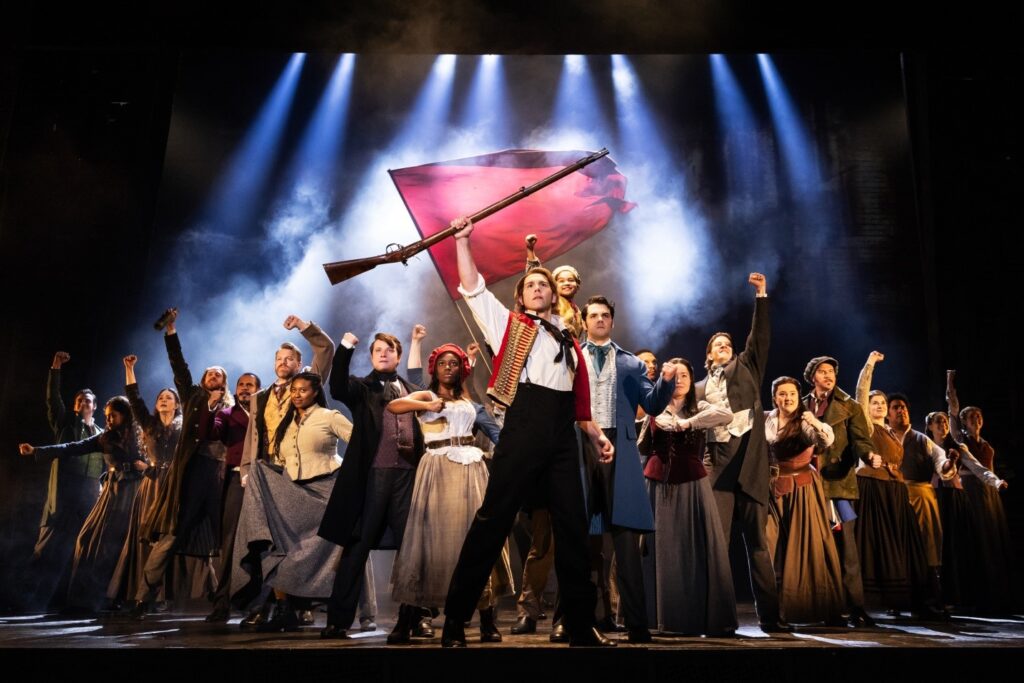
The Olympic Games may have the crowds cheering in Paris, but this week in Montreal all the roars of approval are thanks to the long-awaited return of a musical theater classic.
Les Misérables has marched back into Salle Wilfrid-Pelletier and from the enthusiastic response of the opening night audience, it’s safe to say absence has only made the heart grow fonder. With its timeless score and epic scope, the much-beloved work remains a gripping tale of social injustice, revolution and redemption even decades after it first took the world by storm.
Adapted from Victor Hugo’s 1862 novel of the same name, Les Mis first arrived on the scene in 1980 as a French-language production before being translated into English for London’s West End in 1985. Tickets for the show quickly sold out and American audiences responded with similar excitement when it opened on Broadway in 1987. It went on to win eight Tony Awards including Best Musical, and has since been performed in 53 countries worldwide.
Since it isn’t stated anywhere in the promotional materials, it is worth noting that this tour is based on the ‘refreshed’ version of the show last seen on Broadway in 2014, rather than the original, which was directed by Trevor Nunn. Here, Co-directors Laurence Connor and James Powell offer new sets, choreography and lighting effects, while omitting certain signature elements. Simply put, if you think you already know Les Mis, inside and out, you may be in for a few surprises.

The plot, of course, still which centers around the life and struggles of a fugitive named Jean Valjean in 19th-Century France. Nick Cartell, who stars as the infamous prisoner 24601, has played the part of the conflicted hero in over 1,200 performances and shows no signs of slowing down. While his energetic delivery may occasionally obscure some of his lyrics, his passion for the character is abundantly clear from his first scene to his last. Cartell’s strong, songbird-like vocals also make for an intriguing counterpoint to Valjean’s gritty determination in the face of life’s seemingly endless challenges.
Preston Truman Boyd, as Valjean’s relentless pursuer Javert, brings a necessary gravitas to his portrayal of an obsessive officer of the law. It’s a character type that can sometimes fall flat, but Boyd clearly relishes the opportunity to sink his teeth into Javert’s stern worldview and that intensity only helps elevate the stakes.
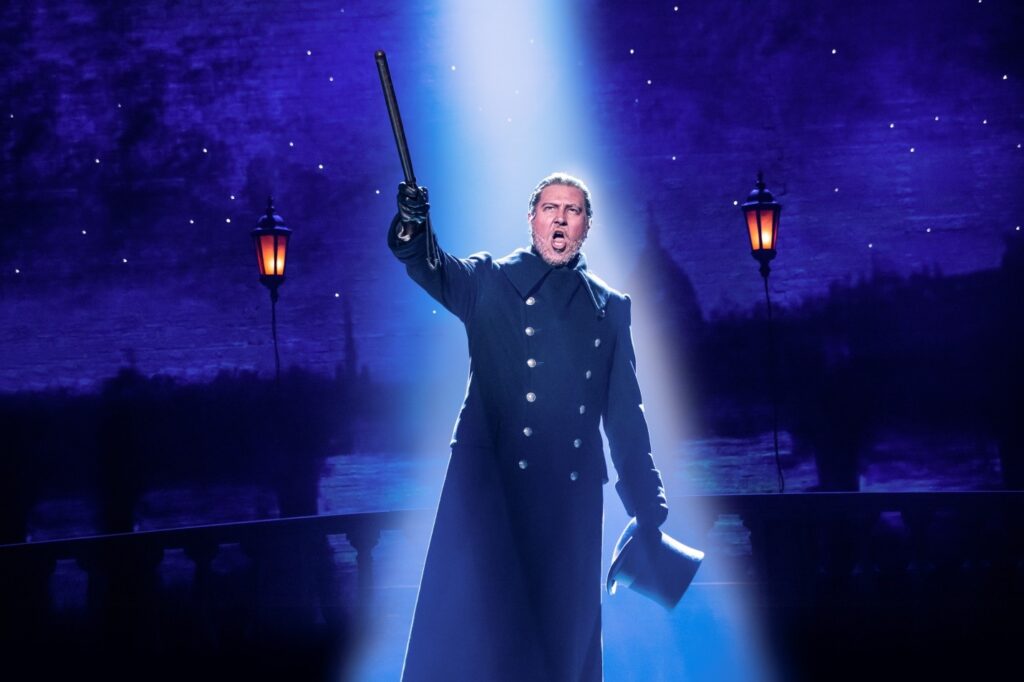
Beyond the two main leads, there is plenty of talent in this capable company of actors. Both Haley Dortch’s tragic Fantine and Devon Archer’s valiant Enjolras impress with their powerful vocals and striking stage presence. Jake David Smith as Marius and Delaney Guyer as Cosette also distinguish themselves by winningly playing up the youthful dorkiness of their characters when they have a brief “meet cute” scene late in Act One. Theirs is one of the most notoriously underdeveloped love stories in all of musical theater, but the savvy performers make a meal out of their brief interactions, adding some much needed humor to the largely serious proceedings.
Traditionally, that responsibility tends to fall to the Thénardiers, who in this production struggle to find the laughs. Matt Crowle, as the infamous Innkeeper who scams his patrons to line his pockets, puts a more slimy spin on his typically hammy character. Victoria Huston-Elem, as his equally unpleasant wife, gets a few more chuckles from the crowd thanks to her clear delivery and comedic timing. Their rousing number, “Master of the House”, has plenty of amusing sight gags if you keep your eyes glued to the ensemble members, but for Les Mis to work, it really needs these two characters to occasionally break the ever-present tension. They bend it, at best.
Also somewhat underwhelming is the work of Mya Rena Hunter in the plumb role of Éponine, who longs for the affections of Marius while permanently stuck in the Friend Zone. Éponine’s gut-wrenching anthem to loneliness, “On My Own”, helped make a Tony winner out of Frances Ruffelle, who originated the part in the ‘80s. Hunter’s overall interpretation, while nicely sung, fails to pull at the heartstrings, even when fate finds a painfully ironic way to grant Éponine’s wish and have Marius finally wrap his arms around her.
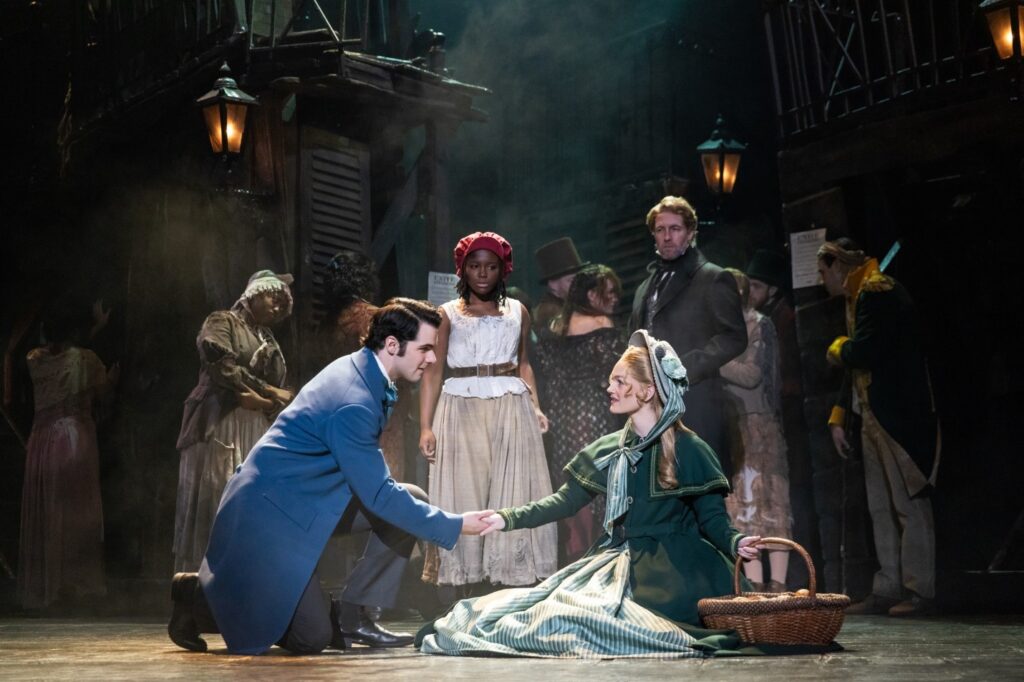
That said, the casting choices made for this tour created some confusion and possibly undercut her ability to connect with the audience. During the transition from childhood to adulthood, the characters of Cosette and Éponine appeared to swap ethnicities during the opening night of the production. Delaney Guyer’s adult Cosette took the stage in a large gown, looking like a grown-up version of Azalea Wolfe’s young Éponine, who was last seen also twirling around in a dress. Hunter, meanwhile, resembled Ava Buesing’s young Cosette, even though she was actually playing the adult Éponine. Judging by the murmurs that followed the reintroduction of these characters, it took a good few minutes for the crowd to catch on and mentally sidestep the issue.
A show as packed with interesting characters as Les Mis offers many opportunities to include performers from all backgrounds and showcase their talents. Care must still be taken to consider the needs of the audience, however, who often identify characters by one or two visual traits – whether ethnicity or height or hair color – simply to keep track of all the unfolding events. If they suddenly become unrecognizable, confusion usually ensues.
Even Jean Valjean himself seemed to disappear into a sea of equally bearded actors with baritone/tenor voices at certain moments, making it difficult to pick him out from the crowd. In a musical that often strains under the weight of its own exposition, keeping things easy to follow needs to be a priority.
And, it must be said, this very much is a show with a lot of exposition. For that reason, in spite of all its success, Les Mis is not an ideal evening out for the whole family. Adults who are easily bored by theatre in general and tykes who are too young to understand much about politics, oppression and survivor’s guilt are best left at home. Even those with a deep appreciation for the material can struggle to sit through the 3-hour runtime without feeling slightly overwhelmed. There are, after all, no fewer than five tearjerker power ballads to digest. In other words, pick your companions wisely before you pick up your tickets.
As for the changes made to the staging, the massive, automated, self-assembling barricade is no longer part of the proceedings. The show still works without this technical coup de théâtre, but a little bit of the magic is lost. The famous turntable used for years in the original production and even on tour is also very much missed, particularly during the Act One closer “One Day More”, as the assembled cast march towards their unknown fates. Now, the actors simply step in front of each other and shift their weight as a digital background awkwardly zooms out behind them. It’s difficult to make marching in place look like a defiant revolution without a revolving stage to bolster the effect.
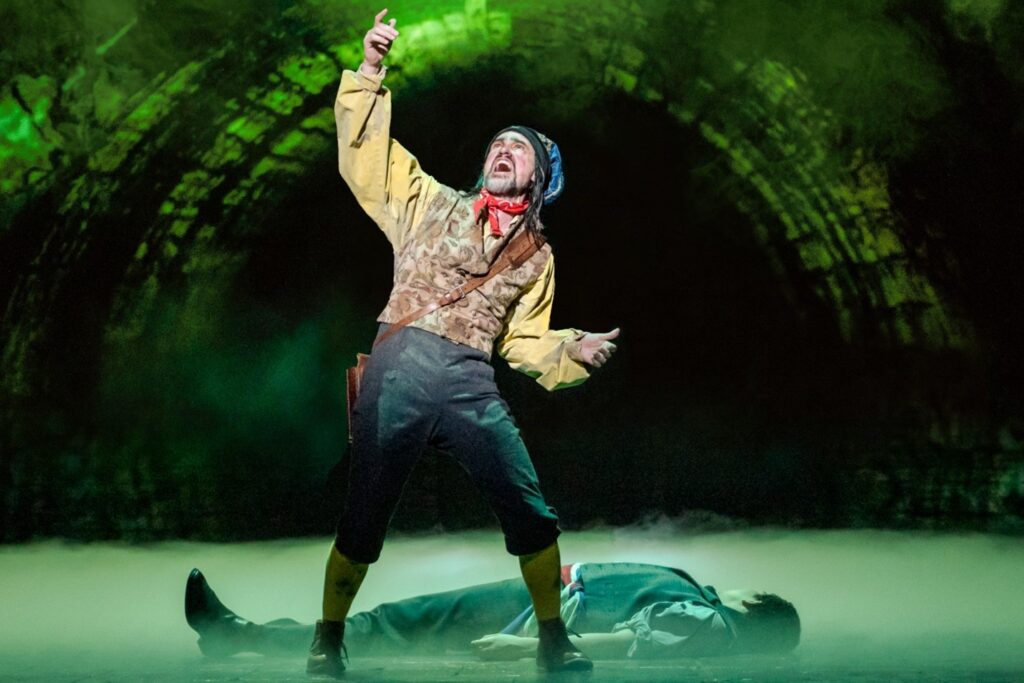
These types of digital projections have become more and more common of late, even on Broadway. Lavish sets and painted backdrops are apparently becoming a thing of the past, though this version of Les Mis does manage better than most. The starlit bridge where Javert sings of his internal struggles is particularly eye-catching and the brick buildings which frame the stage glide together at key moments to create a whole new cityscape for the characters to inhabit. The lighting design during the final moments of the battle at the barricade is also extremely effective.
Sadly, it’s during a climactic sewer scene that the production gets heavy-handed with the CGI projections, giving the impression that Jean Valjean is trudging his way through a 1990s computer game environment. That the tour has as many actual sets as it does is appreciated, but a few slight adjustments could have alleviated the need for digital illusions altogether and the show would be stronger for it.
At the end of the day, even with a few alterations, Les Misérables remains a powerfully emotional experience thanks to its dramatic score by Claude-Michel Schönberg, which frequently elicits goosebumps and more than a few tears. Though traditionally performed by a 22-piece orchestra, the 14 pit musicians bringing it to life on this tour work overtime to compensate, playing 23 instruments between them at various points in the show. Under the direction of conductor Will Curry, they are the unsung heroes of Les Mis and deserve a fair share of the credit for making it all sound as thrilling as ever.
It’s seems safe to say that, given our increased awareness of societal unrest around the world and our collective wish for integrity and kindness to ultimately win out, Les Mis will continue to be a potent piece of entertainment for generations to come. The opportunity to revisit this classic – even if only for a week – is sure to be embraced by theatergoers hoping it would somehow stick around just one day more.
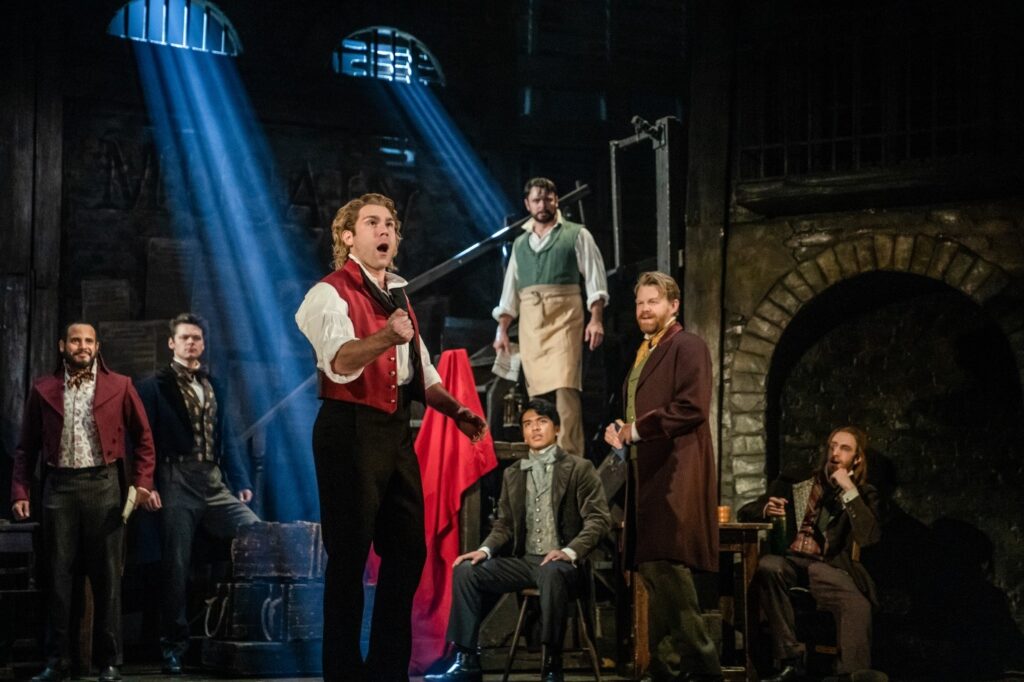
The touring production of Les Misérables runs in Montreal at Place des Arts until August 4, then moves to Ottawa at the National Arts Centre from August 6 to 11, then on to Boston at the Citizens Bank Opera House from August 17-25.

Totally agree that some of the casting choices left us scratching our heads, and some of the lyrics were definitely lost in their delivery. All in all though, I really enjoyed the CGI aspect, and found the way they showed Javert’s “fall” from the bridge in slow motion with the screen showing the swirling water behind him to be spectacular. I too found the Master of the House sequence underwhelming, and some of the songs seemed to drag on, perhaps because the focus was purely on the person’s delivery, with no set pieces or background at all. I’d give it a solid 8/10, a good time but could have been a bit better.